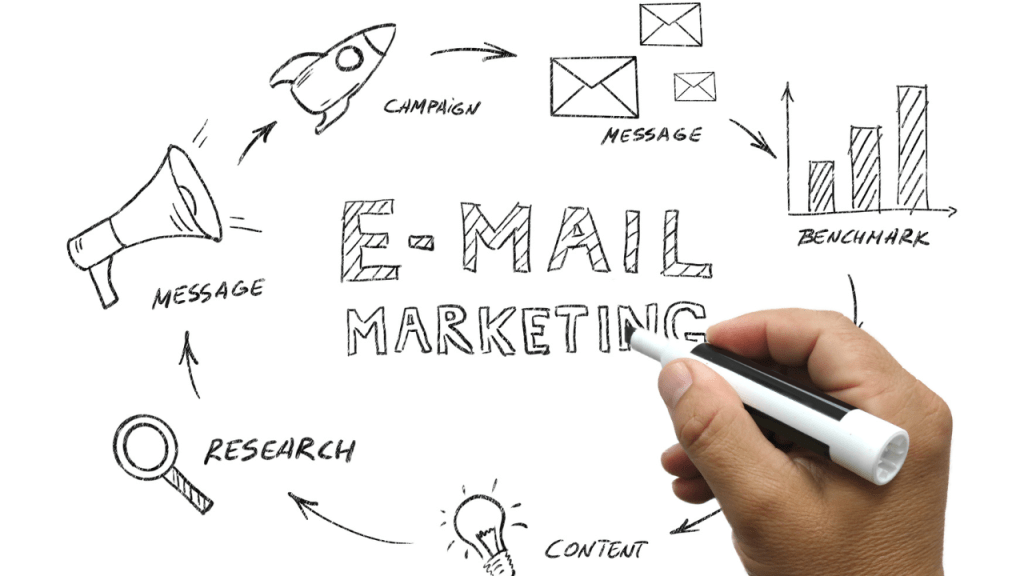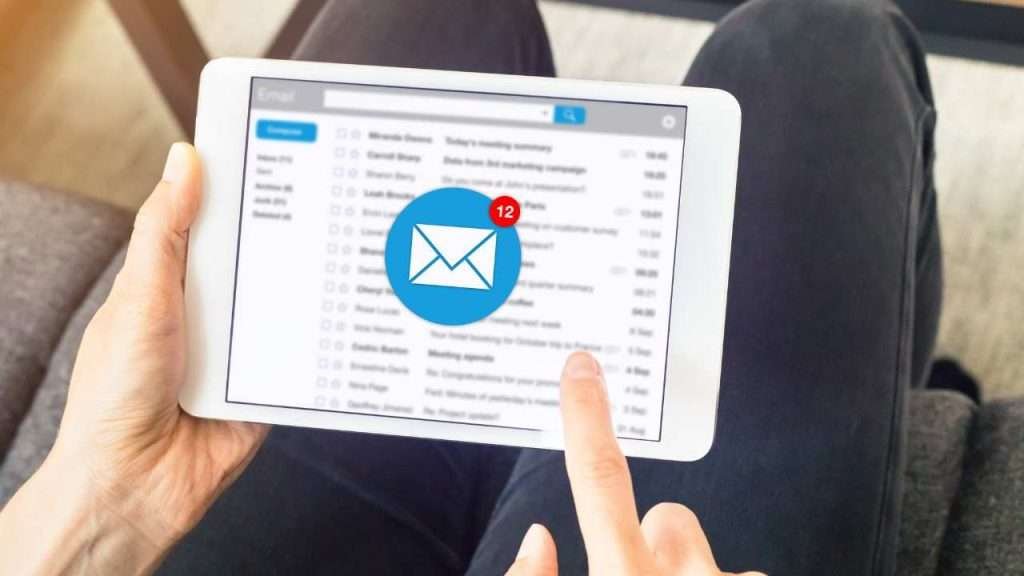Email marketing is a great way for businesses to connect with customers and boost sales. It’s a cost-effective tool, with an average return of $36 for every $1 spent. In 2022, 68% of businesses said they use email to share information with their contacts.
Because of this, using email should be an important part of your digital marketing plan.
When you want more people to know about your brand or buy your products, email marketing is a really good tool. It’s one of the best ways to run marketing campaigns.
In this article, we’ll talk about what is email marketing—how using emails for promotions can help your business grow—and why email marketing is important for every business. Plus, we’ll share some easy tips that how to get email lists for marketing.
Additionally, we’ll discuss the advantages and disadvantages of email marketing.
What is Email Marketing?

Email marketing serves as a robust strategy for promoting your business through the use of emails. It’s a form of direct and digital marketing that lets you tell customers about your latest products or exclusive deals. You can use it with marketing automation to make things easier, it streamlines processes, making your marketing efforts more efficient.
Email marketing is great for generating leads, creating brand awareness, building relationships, and maintaining customer engagement between purchases with various types of marketing emails.
This approach allows businesses to directly connect with customers who have signed up or subscribed to receive emails. It allows them to share information about new products, sales, and updates. Since people choose to receive these emails, there’s a better chance that they will lead to sales compared to other methods. It provides a high return on investment (ROI), making it an important part of many businesses overall strategy for customer outreach.
Today you will find several types of Email Marketing campaigns available in the market. Don’t stress, we’ll cover this plus we are gonna help you find out how to get Email Lists for marketing to grow your business.
Overview of The History of Email
In 1971, a computer engineer named Ray Tomlinson sent the very first email, using a bunch of letters and numbers. This marked the start of a new way for people to talk to each other. Tomlinson also introduced the use of the “@” symbol in email addresses.
Then, in 1978, a marketing manager named Gary Thuerk sent out the first commercial email to tell people about a new product from Digital Equipment Corp.
As the 1990s came around, the Internet became available to more people. This changed how people talked to each other a lot. Marketers figured out that email could be a good way to show off products. This led to new rules; for example, the U.K.’s Data Protection Act was changed to make sure marketing emails had an option for people to say “no, thanks.”
Now we know what is email marketing and the history of email, let’s talk about various types of email marketing campaigns available in 2024.
Types of Email Marketing and Examples

There are various types of email marketing, each with its own goal and way of connecting with your audience. Let’s explore some types of email marketing in deatails so you can make the most effective email campaign for your business.
– Welcome emails
This email extends a warm welcome to customers while inviting them to explore further details about our product or service. It typically includes incentives such as a trial or special bonus, serving as an introduction for potential new customers to familiarize themselves with our business.
– Newsletter emails
Newsletter emails are really popular for sharing info. They usually talk about new stuff like products and services. You might find articles, blogs, and what customers think too. They always ask you to do something, like read a new blog or check out a new thing.
Newsletters come regularly, like every week, every two weeks, or every month. They help keep in touch with the people who get your emails.
Basically, a newsletter is a chance to share cool stuff, thoughts, or tips that your audience will like.
Email is the best way to tell customers about big things happening with your company, like announcements, new products, or changes to how things work.
If something goes wrong on your website or there are delays with shipping, email is the safest and quickest way to let everyone know. It’s like sending a formal message, even for really important news.
– Lead nurturing emails
This type of email marketing is meant to target a particular audience who are interested in a product or service. The idea is to send them a series of emails that provide more information and special offers, with the goal of getting them to buy the product or service. The aim is to move them from thinking about it to actually making a purchase.
– Confirmation emails
When you sign up for emails or newsletters or buy something online for the first time, you might get a confirmation email. This email tells you that your info is received, and you’re set to get more updates. It’s also a way to say your purchase is confirmed or your sign-up worked, and it might have more things for you to do.
Confirmation emails are a key aspect of various types of email marketing strategies, often providing recipients with additional instructions or actions to enhance their overall experience.
– Dedicated emails
If you want to email only some people on your list, it’s called a dedicated email. This could be for those who recently bought something, haven’t been active, are new members, or meet other specific criteria.
– Invite emails
These emails commonly reveal upcoming events, product debuts, and seminars. Businesses typically deploy such emails when there’s a noteworthy occurrence to capture attention, haven’t been active and enhance awareness of special events.
– Promotional emails
These types of email marketing are pretty common and usually go out to a lot of people. They’re not very personalized and are often used to remind people about a brand or hint at new stuff.
In these campaigns, you can talk about special deals, new products and share exclusive content like ebooks and webinars. Sometimes, a campaign includes a series of emails, like 3 to 10 of them, sent over a few days or weeks.
Promotional emails always have a clear thing they want you to do — it’s called a call-to-action or CTA. The CTA is like a specific task you’re asked to do, like visiting a website or using a coupon to buy something. In the example, the CTA is the button that says “Get your gift.”
How often a business sends these emails depends on their sales and marketing schedule. For big times like Black Friday, multiple promotional emails may be sent within 24 hours. But during quieter times, there might be a few weeks between these promotional email campaigns.
– Transactional emails
These emails are automated responses that get sent when your customers do some activities, like buying something from your store.
Examples of these emails include:
- Confirmation of orders
- Thank-you emails
- Emails to reset a password
- Reminders for abandoned carts
- Requests for product reviews
Even though these emails don’t directly promote anything, they’re really important for making sure your customers are happy. They’re quick messages that confirm your customers are getting what they want.
– Survey email
Getting feedback from customers is really helpful for a business. When you send out emails asking for feedback, it shows your customers that you care about what they think. It’s a way of saying you want to make things, like your product or service, better for them. Businesses can use the feedback they get to improve what they offer, aiming for a better product or experience.
– Seasonal marketing emails
Many companies take advantage of holiday seasons or special occasions to connect with their customers and potential clients, sharing details about upcoming sales and promotions. These events are frequently associated with holidays such as Christmas, Valentine’s Day, Mother’s Day, and Father’s Day.
Now have a clear idea of the types of email marketing. You can learn more about how to make and send these types of emails and How to Get Email Lists for Marketing by checking out our guide on best practices for email marketing.
What Are the Advantages of Email Marketing?
In the above, we discussed what is email marketing. Now, let’s talk about the advantages of email marketing for every business. Email is a popular tool for businesses because it makes people do something – either read, delete, or save the email. It stays in the inbox until you take action.
Sending emails is a great way to connect with your audience and bring more visitors to your blog, social media, or any other place you want them to check out. You can also organize your emails based on who’s receiving them, making sure people only get the messages they’re interested in.
With email marketing, you can try different subject lines or messages to see which ones work best. You can do this by using email software that makes it easy to send out emails and analyze the results.
Here are some advantages of email marketing for different business types:
- If you have an eCommerce business, sending emails helps you sell things, bring back customers who left items in their cart, and make customers stick around longer.
- If you run a small business, email marketing is valuable for maintaining brand awareness and building relationships over time.
- Software companies (SaaS) can utilize email marketing to convert subscribers into free trial users, and later turn free trials into paying customers.
- Bloggers and publishers can use email marketing to boost website traffic and drive engagement with affiliate links, ultimately leading to increased revenue.
- Enterprise clients have the capability to expand their email marketing strategies, allowing them to connect with thousands or even millions of customers at once.
Even though email marketing has its advantages, there are also some disadvantages to be aware of. We want to make sure you know about these downsides, so let’s talk about them next.
What Are the Disadvantages of Email Marketing?
Although there are many advantages of email marketing like it appears to be a great way to connect with customers, find new opportunities, and build important business connections, it has its Disadvantages. In fact, many businesses are choosing to use EZ Texting as an alternative form of communication.
Here are some of the main disadvantages of email marketing campaigns.
– Spam
We often receive emails that don’t really help us. They say things like ‘Lose 25 pounds in two weeks’ or ‘Click here for a big discount,’ but we usually just delete them right away.
Some of these emails even go to our junk or spam folders, so we don’t see them. Unless a company is intentionally trying to get past spam filters, these messages are usually a waste of time for the company that sends them.
– Size
If your email is too big, it could take a really long time to open or might not open at all. During this wait, a possible customer might get bored and lose interest, which could end up costing you business.
– Competition
Even though email marketing is widely used, it has a disadvantage – because of this popularity your email isn’t going to be the only one flooding users’ inboxes. This means your email won’t be the only one they receive.
To stand out from competitors, you might have to hire strong copywriters or give extra promotions to grab the audience’s attention.
– Engagement
Certainly! Here’s a slightly revised version:
Often, people see an ad, and sign up for emails due to that particular promotion, but they may not end up using the product or service. This is one of the best advantages of email marketing for a business. Just being in the company’s database doesn’t ensure they’ll consistently open emails and visit the website. It’s crucial to continuously find ways to engage the audience; otherwise, you might end up with high rates of unopened emails or many unsubscribers.
– Design
Nowadays, you can check your emails on different devices like phones, tablets, and computers. This means that if you don’t create a separate email design for each platform, your customers might end up seeing an email that doesn’t look great.
People who send emails for advertising or promotions often don’t know what kind of computer system the person receiving the email is using. Sometimes, a visually appealing email can end up looking weird with breaks, missing pictures, and logos. This can be irritating for the person getting the email, and they might delete it quickly—thinking it’s spam or a scam. These emails are often difficult to read and don’t provide much value.
– Cost
Some email services claim to be free, but they might charge you for things like adding pictures or writing too much. Make sure you know the rules for free emails and what extra things might cost money. If you hire someone to make an email design, gather a list of contacts, and send out the emails, it could get expensive, so keep an eye on your budget.
How to Get Email Lists for Marketing in 2024?

Here is the question, How can you build a group of people to send emails to when you’re doing online marketingin 2024? Well, there are a few ways, and they all involve treating your customers well and following good marketing rules.
Avoid purchasing email lists. Most email marketing companies have rules against using purchased lists. Focus on getting people to willingly subscribe to your emails by offering incentives.
For example, you can give a discount on first orders for those who sign up via a special form. Another option is to provide free shipping on the next order or a chance to win a prize for new subscribers.
Here are more tips for your query on how to get email lists for marketing:
– Make sure you follow the rules when sending automated emails, both in your country and internationally. Be aware of laws like the CAN-SPAM Act in the United States, the Canadian Anti-Spam Law (CASL), or the General Data Protection Regulation (GDPR) in the European Union that regulate how you handle personal information. It’s your job to know and follow the laws that apply to you based on where you are and where your subscribers are located.
– Send emails to talk with your customers. Email is not just for marketing – it can help your business in different ways. Sometimes, instead of always sending marketing stuff, send surveys, thank your customers for buying, ask about abandoned carts, or just say hi. This lets your customers share feedback and get to know the person behind the business.
– Don’t send too many emails once someone has trusted you with their email address, don’t abuse that trust. Flooding the inbox of your audience by sending too many emails, will make them lose interest or unsubscribe. Instead, only send emails about things they’re interested in, and they’ll stay interested in what you have to say.
Here are some proven ways to organically grow your email list for marketing:
1. Add signup forms on your website and in other places
Design an email signup form to make subscriptions as easy as possible. Put this form in places where everyone can see it to make it simple for them to subscribe.
– Typical subscription form includes hotspots:
- Blog entries (conclusion of the post)
- Header or footer of the website homepage
- Page with contact information
- Payment and order confirmation page for eCommerce stores
- Link to social media in the bio
Putting a pop-up form on your website is a good idea, but be careful not to bother your visitors too much. Pop-ups that stop people from using your site can make them not want to stay! Just like where you put your call-to-action is important, think about where you place your sign-up form.
2. Use lead magnets
Nothing makes a list of emails grow faster than premium content.
Offering exclusive content such as ebooks, reports, checklists, or infographics is a smart way to increase your email subscriber list. People receive useful content in return for signing up for your newsletter
Giving special deals and discounts is a good way to get the audience onto your email list, too. For example, Elite Fashion, a clothing brand, gives a 10% discount on your first order when you subscribe to their newsletter.
Well, now you know how to get email lists for marketing. Email lists are important for every business.
Why Email Marketing is Important?
Now we’ll talk about the most important topic – why email marketing is important.
Email is not a new technology. It’s been around since 1971 and was one of the first ways people communicated digitally. Even though it’s over 50 years old, email marketing is more popular than ever. It’s expected that around 4.7 billion people will be using email by 2026.
You might be wondering, “Why bother with email when social media is so popular for marketing today?” “What is email marketing going to add to my marketing strategy?” Although social media is important for digital marketing, email marketing offers its own set of advantages:
Companies can make emails more personalized compared to social media messages. Email marketing is more cost-effective than using other methods to reach people.
Email marketing stands out as an ideal channel for small businesses, especially due to its impressive conversion rates, making it a highly effective tool for driving results.
Unlike social media where everyone can see your posts, emails are private messages sent directly to people’s mailboxes. They’re not affected by constant changes in algorithms. As long as you follow security rules and create email service provider-friendly campaigns, your emails will reach the inbox. This is one of the best reasons, why email marketing is important.
You can easily track and understand how well your emails are doing. By using a CRM suite, you can see how many people open, click, and engage with each email you send.
Using email can also make your social media posts more effective. A study found that when you use email and social media with the same group of people, you can improve the success of your social media posts by 70%. So, use email marketing to make all your communication channels better.
Still don’t trust us? Okay, let’s check out the numbers:
- In 2023, more than 4.37 billion people around the world used email.
- Almost everyone (99%) looks at their email at least once every day.
- About 62% of people like using email to talk to small businesses.
- Many people (59%) said that emails about products or services helped them decide to buy something.
That’s why email marketing is important for every business to grow.
If you don’t use email marketing, you might lose chances to make sales and create strong connections with customers. This could lead to more sales in the future.
You may read -: What are Tools in WordPress? All You Need to Know
That’s it! Now you know what is email marketing and the various types of email marketing. If you have any other information on how to get email lists for marketing, please share your experience in the comments. It will help many people gain more knowledge.







